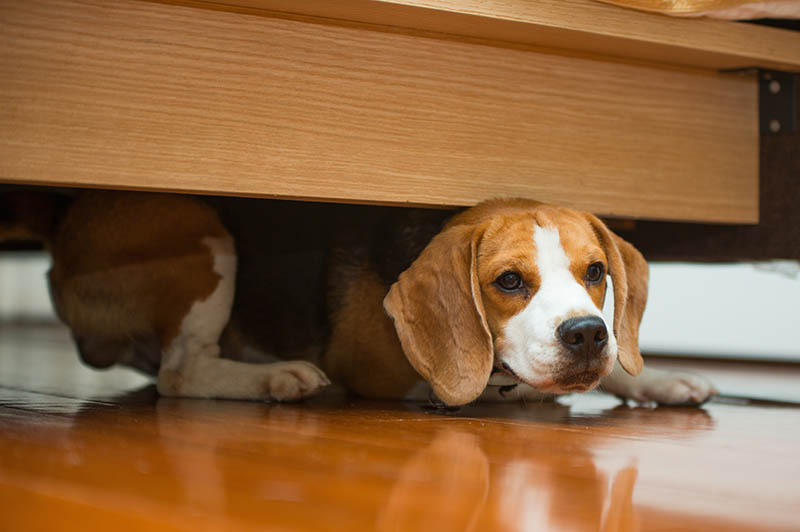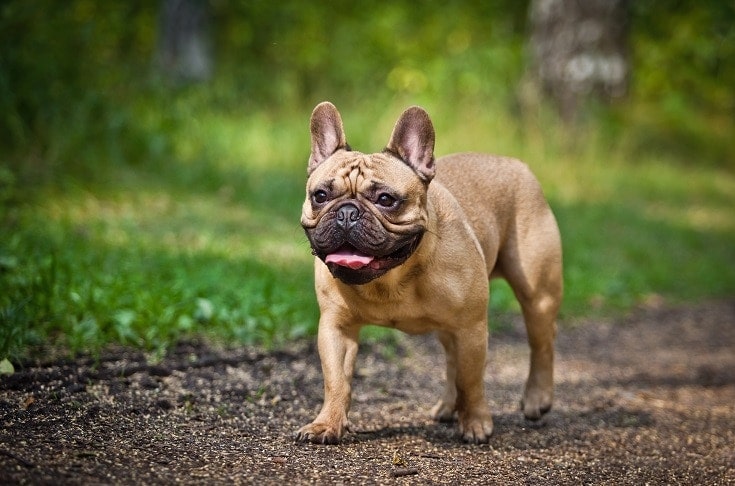Miniature Pinscher vs Doberman: Key Differences (With Pictures)

Updated on
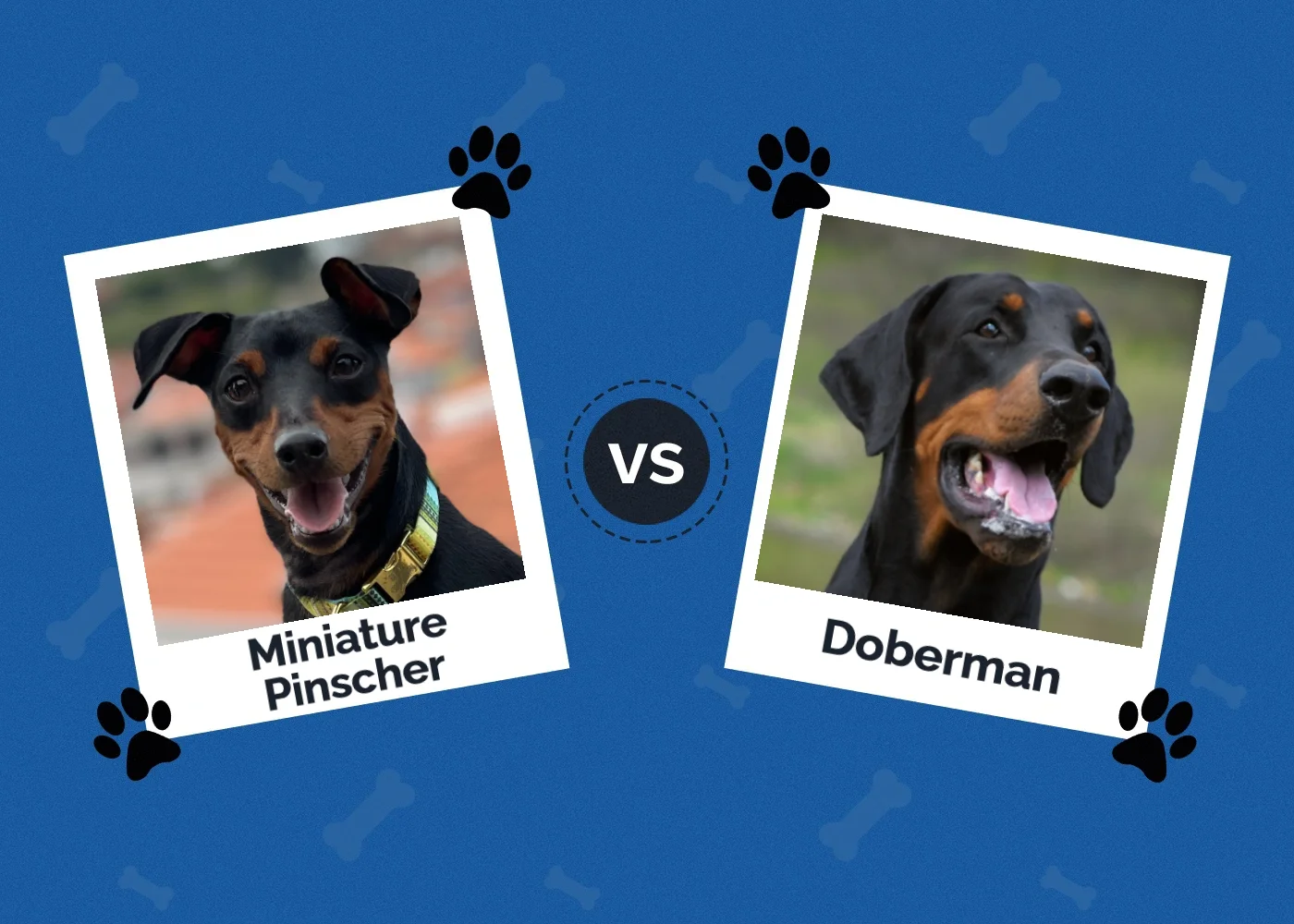
Click to Skip Ahead
Even though the Miniature Pinscher and the Doberman Pinscher have similar names, these are two entirely different dog breeds. They do have a similar appearance in terms of body shape and ears, but they are easy to tell apart with just a glance. There are many other differences between these two breeds, so let’s delve into the specifics here!
Navigate through the post by clicking the title you would like to review first:
Visual Differences
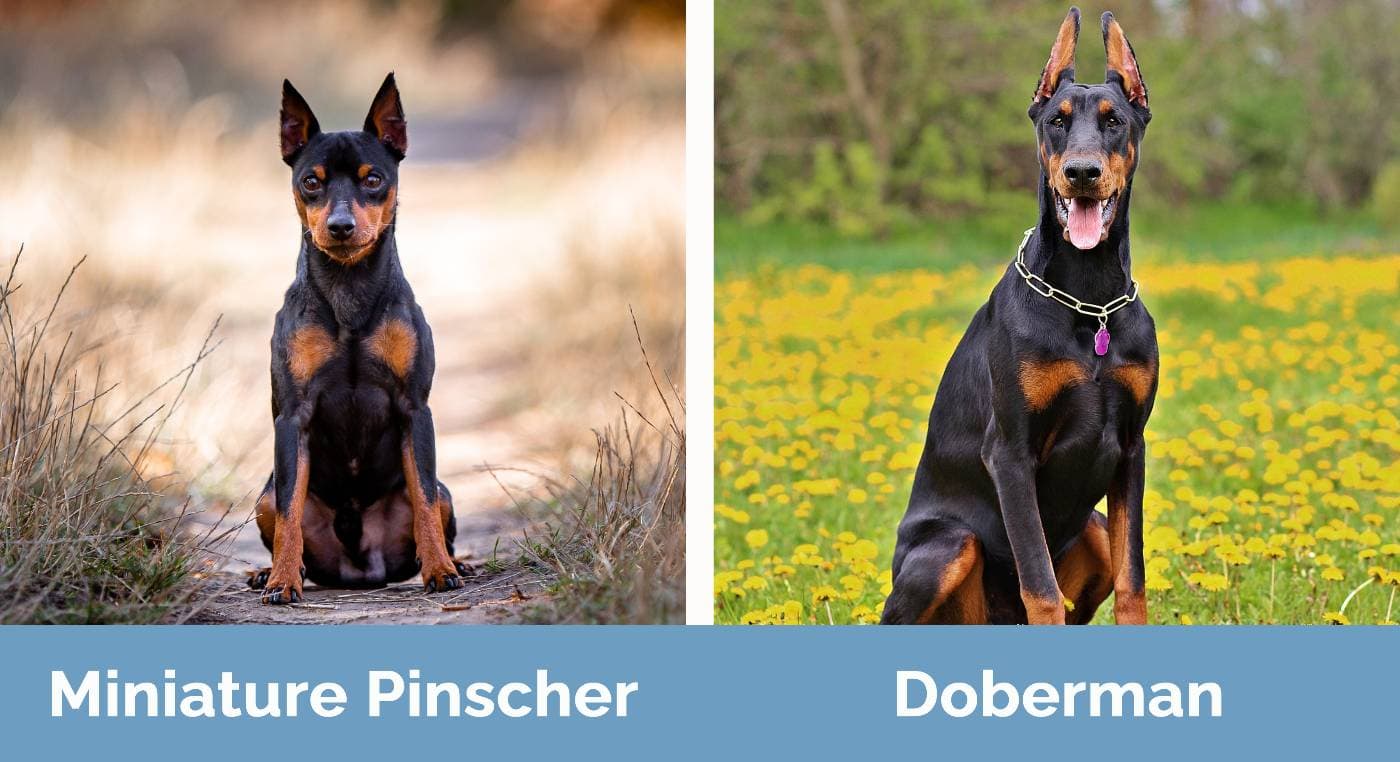
At a Glance
- Average height (adult): 10–12 inches
- Average weight (adult): 8–10 pounds
- Lifespan: 12–16 years
- Exercise: 40+ minutes a day
- Grooming needs: Easy
- Family-friendly: Yes
- Other pet-friendly: Often
- Trainability: Moderate
- Average height (adult): 24–28 inches
- Average weight (adult): 70–100 pounds
- Lifespan: 10–13 years
- Exercise: 1-2+ hours a day
- Grooming needs: Easy
- Family-friendly: Often
- Other pet-friendly: Sometimes
- Trainability: High
Miniature Pinscher Overview
The Miniature Pinscher is an enthusiastic little dog with a big personality. This breed is a miniature version of the German Pinscher and is believed to have Dachshund and Italian Greyhound relatives. This small yet mighty dog was first recognized by the AKC in 19251 and has since become a popular pet among households in the United States.
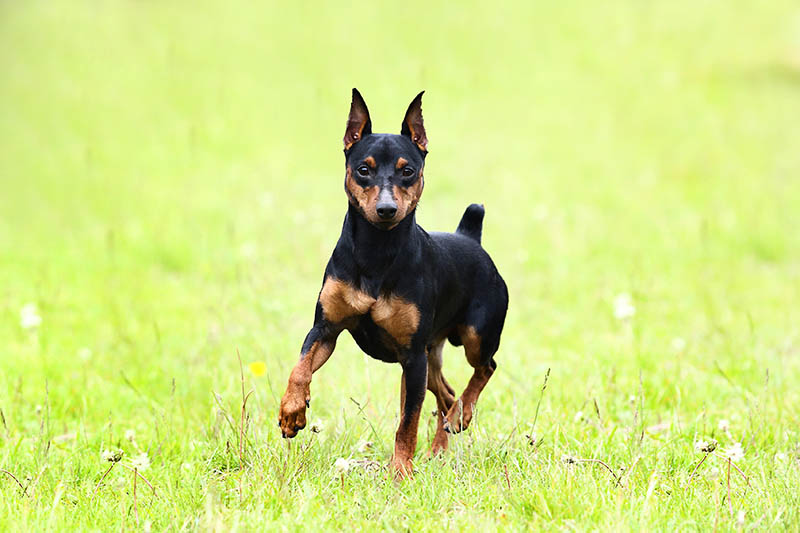
Personality / Character
Miniature Pinschers tend to be fun-loving, playful, adventurous, and sociable in their everyday lives. This breed is known for being excellent companions to children of all ages, and they are cherished as cuddly lap dogs by adults. Although they can get along with other dogs, they do tend to be territorial and “scrappy,” which can lead to fights. These dogs can easily get bored too, so it’s important to make sure that they don’t spend too much time alone at home and that they always have something of interest to do.
Training
This dog breed is bright and typically takes well to obedience training, which is crucial, anyway. Without it, the Miniature Pinscher can be unruly and overbearing. These dogs can start training as early as 8 weeks old. These dogs can also be trained to be good with other people and dogs outside of the family dynamic through socialization while still young. They should be exposed to different people, dogs, and cats often so they can learn how to behave properly.

Exercise
Like all dogs, Miniature Pinschers require daily exercise to stay happy and healthy. However, they only need about 45 minutes of exercise each day, which is significantly less than the needs of a Doberman Pinscher. A walk around the block and a couple of play sessions should do the trick on any given day to keep this dog calm and well-behaved.
Suitable for:
Miniature Pinschers can be great family pets because they get along with kids of all ages and they are loyal to their family members. They can also be happy in a household with just adults or seniors living there. Their small stature makes them suitable for apartment and house dwellers alike.
Doberman Pinscher Overview
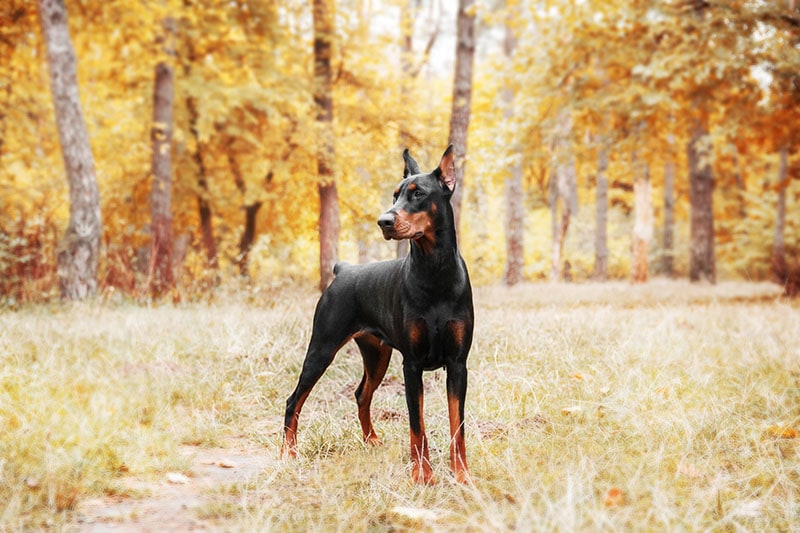
Doberman Pinschers are large, athletic dogs that were bred to work. Nowadays, they are family pets, but they also work as guard and protection dogs and service animals. Accepted into the American Kennel Club in 1908, these are purebred dogs.
Personality / Character
This impressive dog breed is known for their independent yet loyal nature. While they have gained a reputation for being aggressive, this is usually only the case when working as a protection dog. Pet Doberman Pinschers are generally sociable and extremely affectionate toward their human companions, even kids. However, these dogs don’t always get along with other dogs, especially those that don’t share a house with them. If well socialized, though, they don’t have a problem fitting into social settings where strangers might be present.
Training
Training a Doberman Pinscher is essential, as they are big dogs that can be tough to handle if they are not obedient. Obedience training can start as early as 8 weeks, like with the Miniature Pinscher. They can make good guard and protection dogs, and they take to training for these things well, but obedience should always be the first priority. Due to their high energy levels and athleticism, Doberman Pinschers can do well with agility training too.
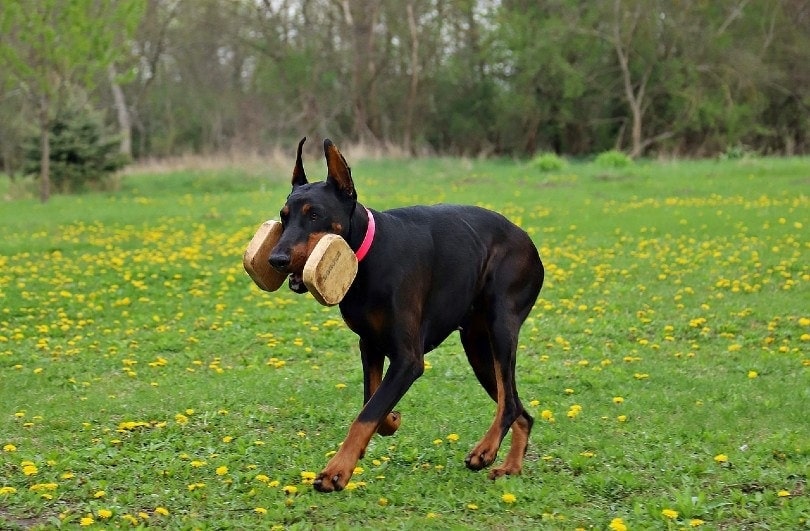
Exercise
This dog breed is extremely active, so they need at least 1 or 2 hours of exercise each day, depending on their lifestyle and energy levels. Long walks around the neighborhood and excursions on hiking trails can help this breed expel pent-up energy. A fenced yard to play in during the day is also ideal.
Suitable for:
Doberman Pinschers are suitable for those looking for a guard or protection dog, families with older children, and adults who aren’t swamped with a bunch of daily commitments. These dogs need plenty of attention, interaction, and exercise time. They can live in an apartment setting, but they are happiest in a house with a fenced yard.
Physical Differences Between the Two Breeds
The most noticeable difference between the Miniature Pinscher and the Doberman Pinscher is their size. While Miniature Pinschers stand at about 12 inches tall and weigh 8 to 10 pounds when fully grown, Doberman Pinschers stand at about 26 inches tall and weigh up to 100 pounds as adults.
Miniature Pinschers are not “wedge” shaped like Dobermans are. The eyes of a Miniature Pinscher are round, while the Doberman’s are almond shaped. Dobermans have longer necks and broader chests than Miniature Pinschers do. Both dog breeds may have floppy or cropped ears, but only the Miniature Pinscher might have naturally erect ears.
Which Breed Is Right for You?
It can be tough to determine whether the Miniature Pinscher or the Doberman Pinscher would be a good pet for you, but only you can make that determination. Start by deciding whether you want a small or large dog. Then, consider the amount of time that you have daily for things like walks and play sessions. Are you interested in home and family protection, or just a companion pet? Make a list of the attributes that you want in a dog to help determine which of these breeds is right for you.
Featured Image Credit: Left – Alex Osa, Pexels | Right – Kseniia Kolesnikova, Shutterstock





